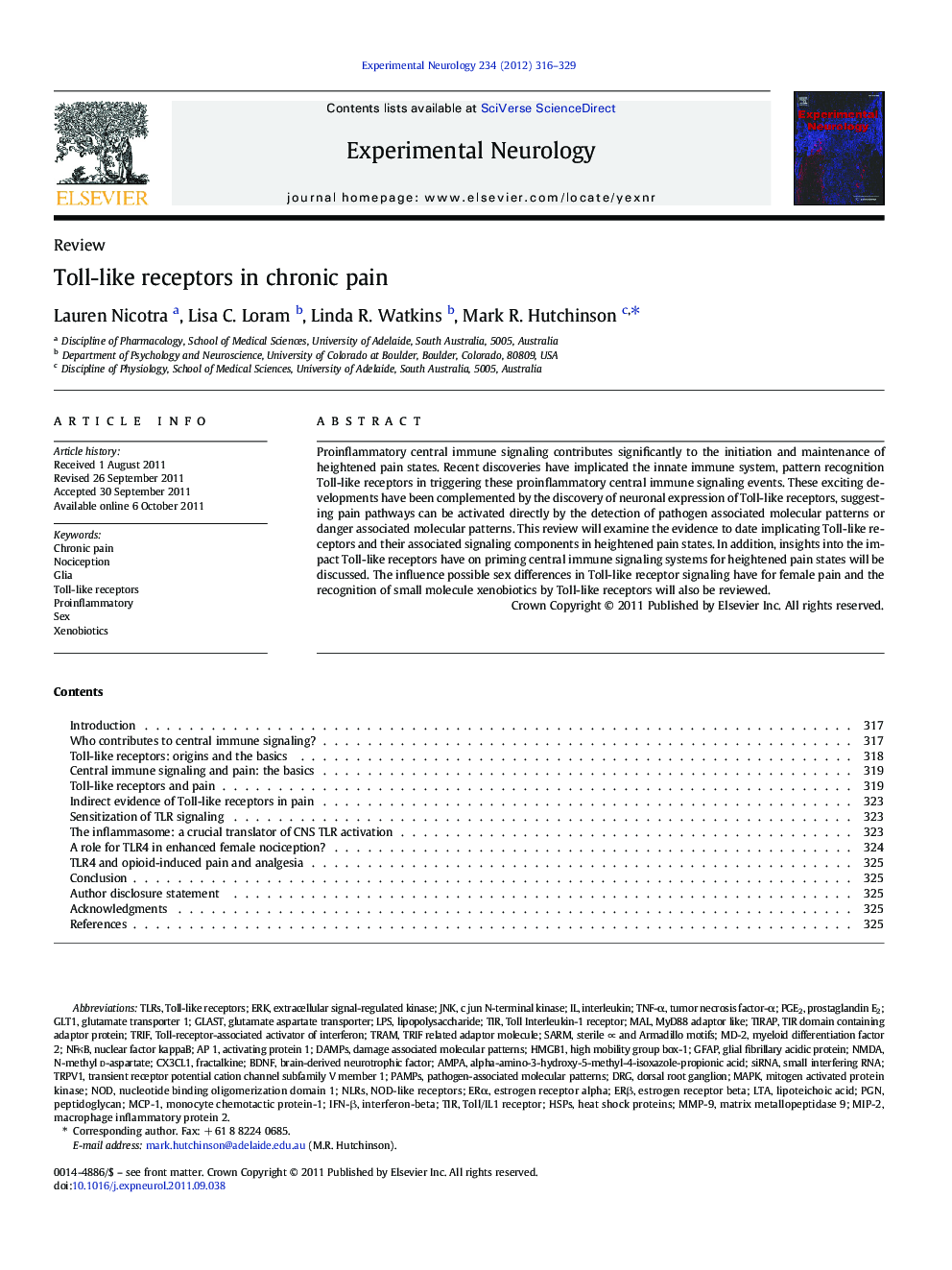| Article ID | Journal | Published Year | Pages | File Type |
|---|---|---|---|---|
| 6018793 | Experimental Neurology | 2012 | 14 Pages |
Abstract
⺠Proinflammatory central immune signaling contributes to chronic pain. ⺠Toll-like receptors are now recognized to contribute to the chronic pain process. ⺠Recent evidence shows neuronal Toll-like receptor expression and activation. ⺠This review examines Toll-like receptors in chronic pain and xenobiotic recognition.
Keywords
N-methyl d-aspartateERKPGE2MD-2MCP-1PGNCX3CL1MIP-2AMPAIFN-βSARMLTAHMGB1GLASTNMDAHSPsERβERαNODTIRAPPAMPsalpha-amino-3-hydroxy-5-methyl-4-isoxazole-propionic acidMALLPSTRPV1NLRsGFAPMMP-9JnkDRGDAMPsdorsal root ganglionBDNFGLT1MAPKNFκBProinflammatorySmall interfering RNAsiRNATLRsTRIFdamage associated molecular patternslipoteichoic acidpathogen-associated molecular patternsinterferon-betainterleukinXenobioticsTRAMtumor necrosis factor-αTIRSexglutamate aspartate transporterchronic painmyeloid differentiation factor 2nociceptionBrain-derived neurotrophic factorTNF-αnuclear factor kappaBfractalkineactivating protein 1lipopolysaccharidematrix metallopeptidase 9Monocyte chemotactic protein-1Glial fibrillary acidic proteinmacrophage inflammatory protein 2mitogen activated protein kinaseHeat shock proteinsProstaglandin E2Peptidoglycantransient receptor potential cation channel subfamily V member 1extracellular signal-regulated kinasehigh mobility group box-1glutamate transporter 1Estrogen receptor alphaEstrogen receptor betaNOD-like receptorsToll-like receptorsGlia
Related Topics
Life Sciences
Neuroscience
Neurology
Authors
Lauren Nicotra, Lisa C. Loram, Linda R. Watkins, Mark R. Hutchinson,
